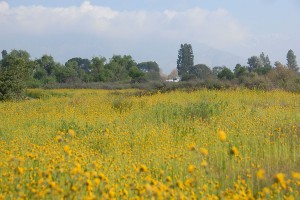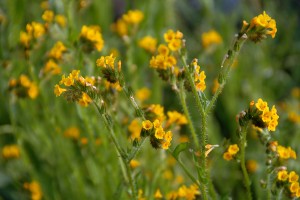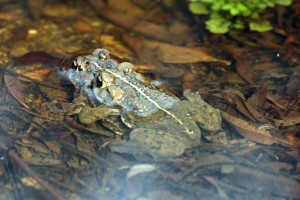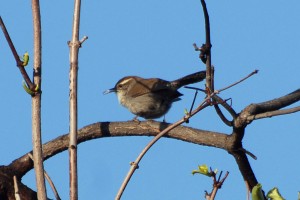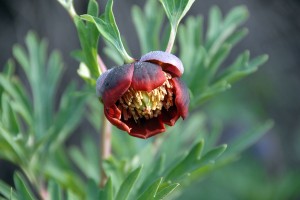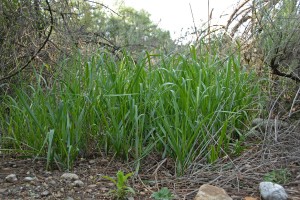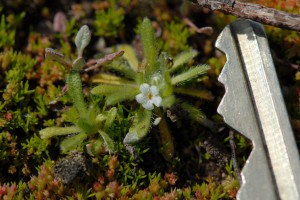Spring has definitely arrived at the BFS! In the last week Amsinckia menziesii, Rancher’s Fireweed, has started blooming all over the East Field — a veritable sea of gold. Manager Stephen Dreher’s efforts last year to mow the non-native grasses before they went to seed seems to have really paid off in encouraging our native wildflowers.
Over on the HMC property, the native Southern California Toad (Anaxyrus boreas halophilus) have been busily spawning in the “Toad Pool”. This amplectant pair with strings of eggs was photographed on February 21, and now the pool is brimming with tadpoles.
And all around the BFS, birds are busy establishing their territories and attracting mates — the Northern Mockingbirds (Mimus polyglottos) have started singing their elaborate songs, the male Ruddy Ducks (Oxyura jamaicensis) are wagging their upright tails and beating their chests with their outrageous blue bills, and many birds, like the Bewick’s Wren (Thryomanes bewickii) shown below are more conspicuous than they are at other times of the year.
Next to the arroyo just west of the entrance road two of our less common native plants are putting on their spring growth. At first glance, neither of these perennials looks like it “belongs” in the Coast Sage Scrub plant community, but they both grow quickly during the rainy season, and above-ground parts shrivel up when the weather turns hot and dry. The petals of nodding maroon flowers of the California Peony (Paeonia californica) cup a cluster of yellow stamens. New growth appears typically in December, the flowers bloom in January–May, and the plant goes dormant by May.
Near the peonies is a stand of Giant Ryegrass (Leymus condensatus). While most of the grasses growing on California’s hillsides (and the BFS!) originated in Europe and came over with settlers, Leymus condensatus is native, and we have several stands on the BFS. In natural settings Giant Ryegrass goes dormant in the dry season, but will stay green if irrigated, and several selections are used horticulturally.
Along paths and open areas all over the BFS the ground is being covered by a carpet of tiny succulents — Sand Pygmy-Weed (Crassula connata) and Moss Pygmyweed (Crassula tillaea) — that turn red as they age. Among them are tiny flowers of one of the members of the Borage family — Cryptantha, Pectocarya, or Plagiobothrys. Figuring out their identity requires study of the nutlets, so we’ll have to wait for that. Would anyone like to take this on?
